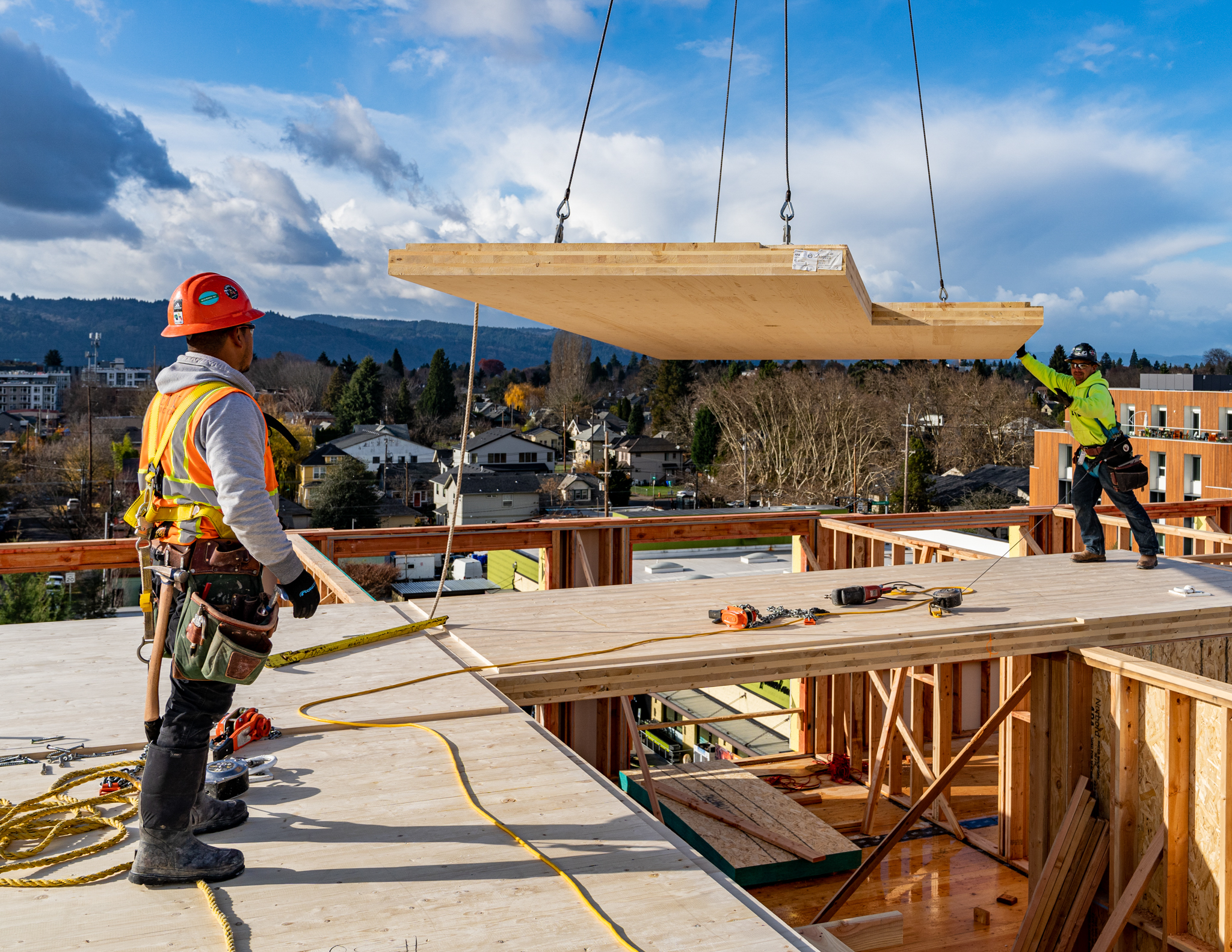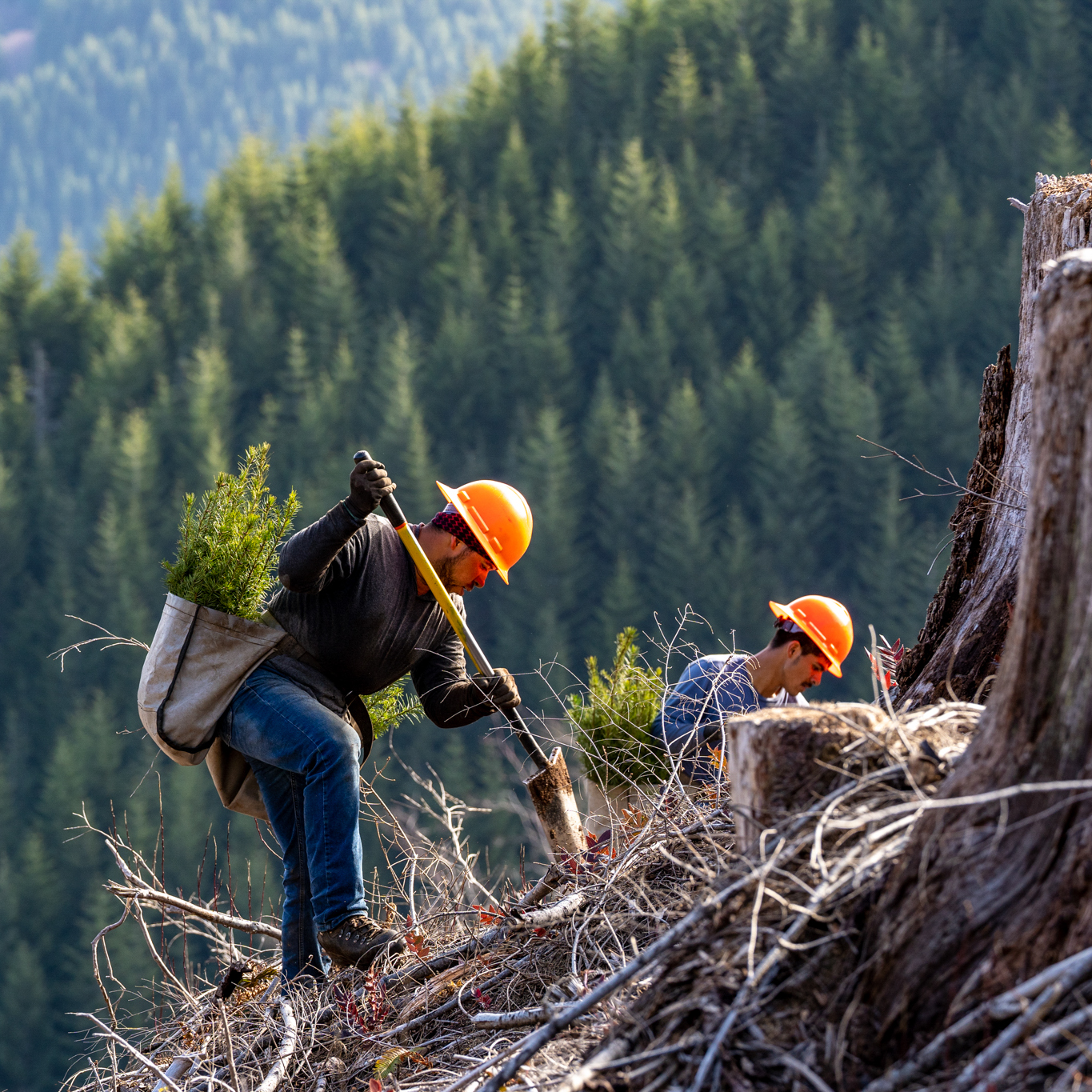That’s where mass timber comes in. Tall mass timber buildings displace carbon-intensive building materials such as concrete and steel with long-lived biogenic carbon. This keeps fossil carbon in the ground and supports forests as a stable carbon sink.

Mass Timber Rising
The name might lead you to believe otherwise, so let’s be clear–mass timber construction does not use massive trees. The beauty of mass timber is that the technology combines standard-dimensional lumber (2x6s and 2x8s) manufactured from commercial sawlogs, into large structural panels and beams. Mass timber is an advanced engineered wood product made by combining and optimizing many small pieces together. It’s a technologically advanced building material that gives great strength without having to cut large trees.

Sustainable Forests
The promise of mass timber lies in using our forests to construct beautiful tall wood buildings that displace carbon-intensive building materials. By switching to wood, we can store carbon in buildings while leaving fossil carbon in the ground. But is it sustainable? The northwest states of Oregon and Washington are top lumber producing states. And the region is home to the country’s most impressive stores of forest carbon.

Tall Wood – Low Carbon
Mass timber is a low-carbon solution for the built environment, which is directly and indirectly responsible for 39% of global carbon emissions. The ongoing greening of the electric power grid (zero-carbon electricity in Oregon, Washington, and California by 2045 or sooner) will significantly reduce emissions from operating those buildings.
